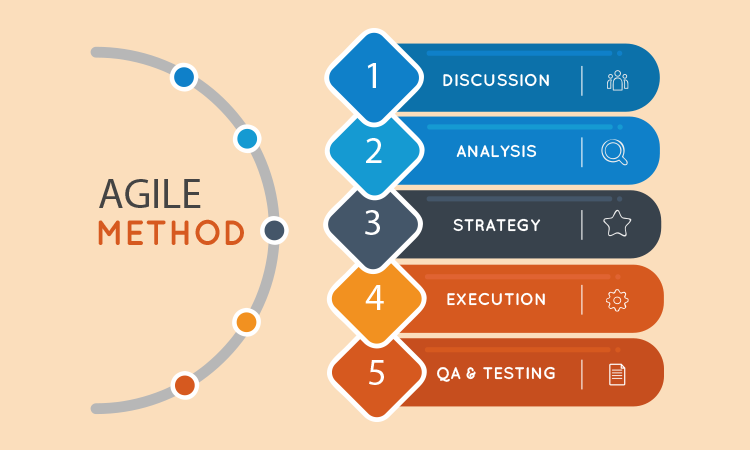By Mrugesh Panchal,

The Agile method can be understood as a model based on the incremental product development process with a special focus on process adaptability and client satisfaction. A cross-function development team collaborates to develop the product through incremental product cycles which keep on repeating on a consistent basis until the entire product is developed.
What is the Agile method? In Agile, the product is “manufactured” through incremental cycles known as sprints. The entire product is not manufactured “at a go” like it is done in traditional Waterfall method. Instead, the product is built in “bits” and “pieces” through sprint cycles. At the end of each sprint, “some” product features and functionality is developed by the team. Each feature is properly tested, documented, and presented to the product owner and stakeholders for “verification” purposes. Once they Okay the development, it is accepted as “Done”. The sprint cycles are repeated until all the product features are developed. Subsequently, the features and functionality are integrated to form a complete working product.
Fundamental principles followed in Agile methodology process
In a true sense, Agile is not a methodology, but a framework. However, many individuals still refer to Agile as a “methodology”. The Agile process is much different as compared to traditional development approaches like Waterfall. Agile believes that each process should be “handled” uniquely based upon the nature and complexity of the product to be developed. Moreover, each project has to be “tailored” as per Agile principles to avail the maximum benefit in terms of team productivity and a successful project release. Therefore, Agile has to be “implemented” in a project.
A few fundamental principles define the Agile methodology process.
Individuals and interactions
Self-organized and self-motivated teams collaborate and interact to develop the product. The teams may be situated in a common “location” or may be disjointed. The team members may work independently or in pairs (paired programming).
Working software
Developed and “working” software takes precedence over documentation and management protocols. The best method of “defining” productivity is to develop bug-free and deployable software that is accepted by the client(s).
Customer collaboration
The client, or the customer, remains closely involved with the development activity and “clears” all “development” offered by the Agile team. Client interaction and collaboration forms are an inherent part of the Agile process.
Responding to changes
The framework facilitates any changes, as and when required, to be incorporated in the product design and development – even late during in the product development cycle. Changes in the product features and functionality can, and should, be quickly incorporated in the product design.
Advantages of Agile approaches and development
Agile approaches offer several benefits.
- Offers a practical and realistic approach towards software development.
- Promotes and encourages teamwork as well as cross training. Individual team members “contribute” more towards development.
- Product functionality can not only be developed quickly but also demonstrated to the product owners, project owners, and stakeholders.
- Resources requirements are kept at a minimum. Operation overheads are significantly reduced.
- Ideally suited for developing products whose “design” and functionality is likely to change with time. However, other projects can also be successfully developed using the Agile framework
- Early and sustained delivery of product features and functionality.
- Very few rules and principles to be followed. The framework can be easily implemented if the process is understood and known properly.
- Involves very “little” planning in the initial stages. Once production begins, the time required to develop the product is further reduced to a bare minimum – the team has to think about what needs to be developed “at the moment” rather than “thinking” about the entire product development.
- The development team is able to perform better and offer more meaningful productivity owing to collaborative efforts.
